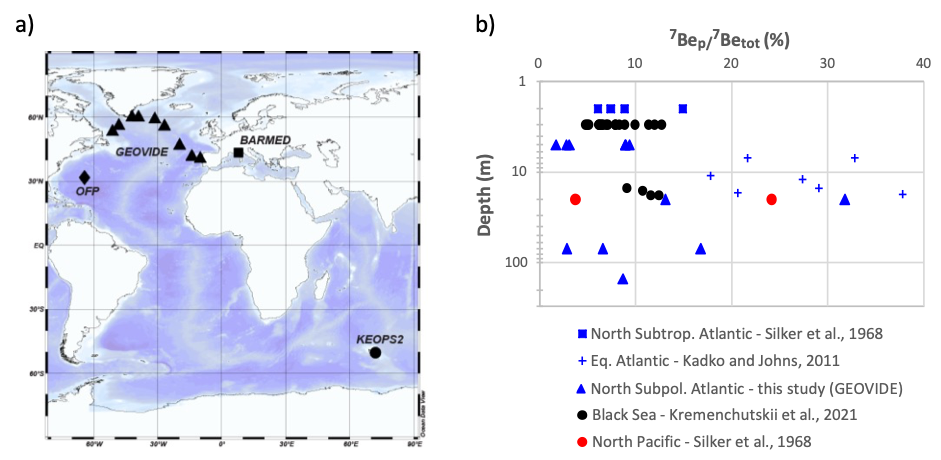Solid-solution distribution of the cosmogenic beryllium-7 in the water column
This work questions the validity and limits of the hypothesis that particulate beryllium-7 (7Bep) can be neglected in the different oceanographic applications of this tracer. To tackle this issue, Grenier and co-authors (2023, see reference below) measured the 7Be activity in suspended particles collected in and below the mixed layer in oceanic regions as different as the Mediterranean Sea, the Southern Ocean and the subpolar Atlantic (section GEOVIDE/GEOTRACES-GA01). While the 7Bep activity generally monotonically decreases with depth below the mixed layer, they reveal that, at least in some oceanic regions, the removal of 7Be by marine particles may be significant. The 7Bep fraction ranges from 2% to 32% of the total 7Be activity along the GEOVIDE section in the North Atlantic. In the Labrador Sea, the comparison of the 7Bep inventories with the dry 7Be deposition fluxes estimated from aerosol samples collected during GEOVIDE suggest that a significant portion of 7Bep may be removed by sinking particles. The authors conclude that future research should focus on quantifying the downward export of 7Bep to deep waters, and on assessing its temporal and spatial variability. They strongly recommend that future sampling programmes should aim to collect seawater and particulate samples at the same locations, at the same depths, and at the same time.

Reference:
Grenier, M., van Beek, P., Lerner, P., Sanial, V., Souhaut, M., Lagarde, M., Marchal, O., & Reyss, J. L. (2023). New insights on the 7Be cycle in the ocean. Deep Sea Research Part I: Oceanographic Research Papers, 194, 103967. doi:10.1016/j.dsr.2023.103967
